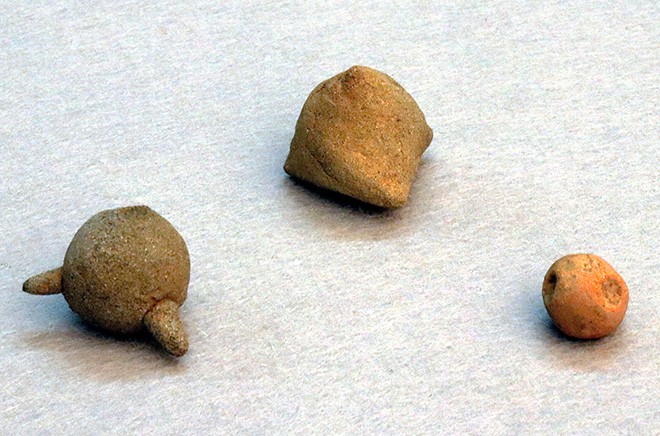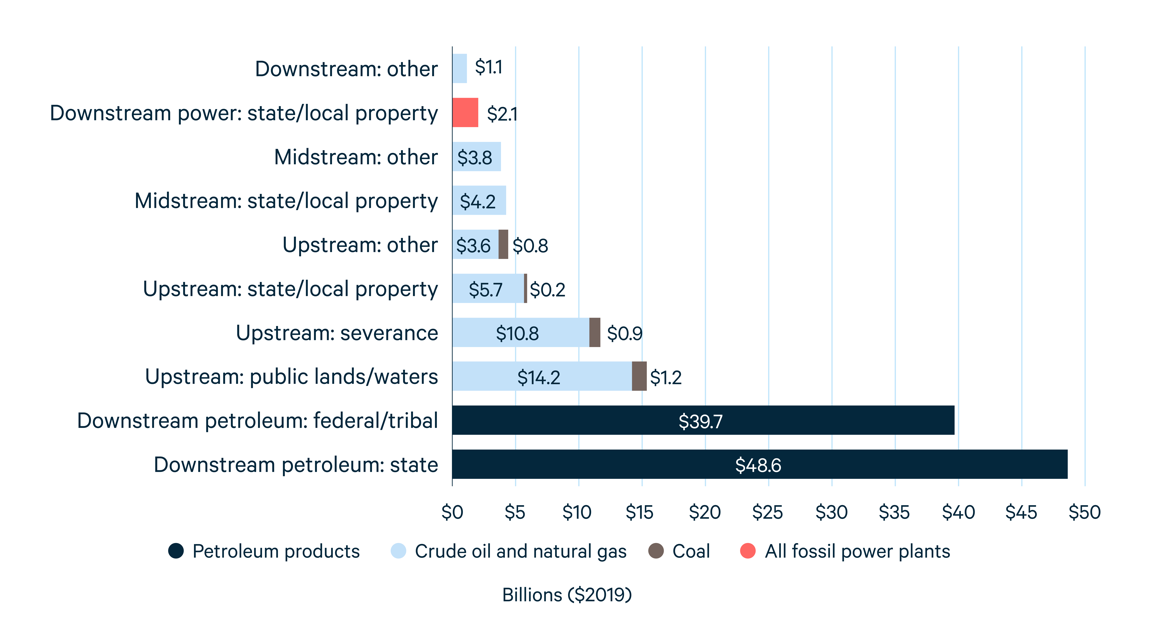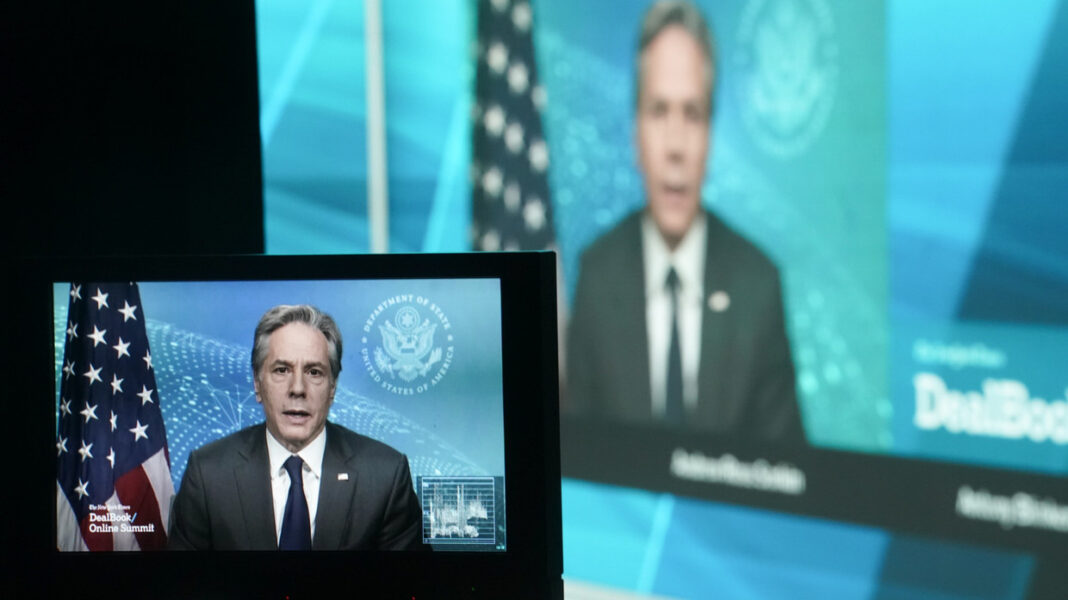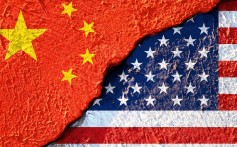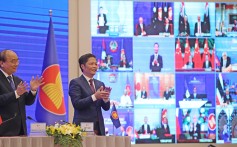Iohannis: Increasing US military presence in Romania remains important objective
Romania is concerned about the security situation in its neighbourhood, generated by the "massive" deployment of Russian troops in the vicinity of Ukraine and its implications for Euro-Atlantic stability, president Klaus Iohannis said on Wednesday, at the annual meeting with the staff of the diplomatic missions accredited in Bucharest, stressing the need for concrete de-escalation on the ground.
"Romania is actively involved in the strategic stakes processes at NATO and EU level regarding the developments in the Eastern and Black Sea Neighbourhood. We are, naturally, concerned about the security situation in our neighbourhood, generated by the massive deployment of Russian troops in the vicinity of Ukraine and its implications for Euro-Atlantic stability," the President said at the meeting at Cotroceni Palace.
He recalled that an important interaction is taking place on Wednesday, under the NATO-Russia Council, complementary to the Russian-U.S. strategic stability dialogue at the beginning of the week, about which the Romanian authorities were informed in real time.
"From our viewpoint, NATO's dual-track approach to Russia, which we have consistently supported, must consist of both firm and credible deterrence measures and the openness, on this basis, to dialogue. This dialogue must have as a permanent landmark the principles, values and commitments that represent the foundation of the Alliance. It is absolutely necessary to de-escalate the security situation on the ground. The threat with the use of force, as well as the questioning of the current parameters of the European security architecture, are unacceptable. We also support the need to continue strengthening the Allied deterrence and defense posture in a coherent and comprehensive manner throughout the Eastern Flank, including and especially in the Black Sea region," Iohannis added.
According to him, the NATO Summit in Madrid in June will be the culmination for the adoption of key decisions for the future of Alliance, and Romania is already actively and constructively involved.
"The main decision will concern NATO's new Strategic Concept, through which the Alliance will continue to adapt to the new challenges and strengthen its profile," the President stressed.
President Iohannis mentioned that at the level of the European Union, in the discussions on the Strategic Compass, Romania will pursue the maintenance of the high level commitment within the Common Security and Defense Policy.
"The deepening of NATO-EU cooperation and the complementarity of the two organizations, with the avoidance of any duplication, remain essential in this exercise. The concept of the Union's strategic autonomy must take into account these parameters and be better connected to that of the strategic resilience of the Union and its Member States," Klaus Iohannis stressed.
He mentioned, in the context, the objective of the full operationalisation of the Euro-Atlantic Centre for Resilience in Bucharest.
În this conetxt, President Iohannis stated that increasing US military presence in Romania remains an "important" objective.
"The security problem will be a priority in this period. Thus, faced with recent security challenges, it's obvious that we need a more powerful action in the realm of discouragement and defence, action which has to be articulated in the spirit of unity, transatlantic cooperation and commitments within NATO. Increasing the American military presence in Romania also remains an important objective," said, the head of state, at the meeting at the Cotroceni Presidential Palace.
Klaus Iohannis emphasized that 2021 and the security developments which can affect the Euro-Atlantic space reconfirmed the "crucial" importance of the transatlantic relations, which Romania, as a strategic partner of the United States of America, supports strongly.
He recalled the discussions he had with the US President as part of the B9 Summit hosted in Bucharest, as well as on the sidelines of the NATO Summit in Brussels and which "have strengthened the reciprocal commitments for the revitalization and consolidation of the trans-Atlantic relation."
The head of state spoke at length about the objectives of the Romania - US partnership, as well as of the consolidation of cooperation in the civilian nuclear domain regarding small modular reactors, through the launching of the program in this domain.
"We encourage the involvement of the United States in major projects for regional interconnection, with a strategic impact, such as Rail2Sea and Via Carpathia. At the same time, we wish to progress in what regards in what regards the common objective of Romania's accession to the Visa Waiver program," said the President.
The head of state hopes that, this year, which will see the celebration of 25 years since the signing of the Romania-US Strategic Partnership, to bring new accomplishments and applied projects in domains such as security, energy - with emphasis on climate change - or advanced technology.
În his opinion, Romania has been and will continue to be a "strong" promoter and supporter of democratic principles.
"In the current context, which involves multiple and varied challenges to the rules-based international order, I reiterate our country's deep attachment to the principles and norms of international law. Romania will continue to take firm action to combat and prevent anti-Semitism, xenophobia, racism, intolerance, hate speech as well as terrorism. Romania has also been and will continue to be a strong promoter and supporter of democratic principles, which it promotes in the region and globally, emphasizing the need for human rights to be respected and an inclusive, internal dialogue to be held. That is why we cannot be indifferent to situations such as those in Belarus or the latest developments in Kazakhstan. We will not give up on this approach," Iohannis said at a meeting at the Cotroceni Presidential Palace.
He also stressed that Romania will "actively" continue its efforts to ensure the rights of persons belonging to the neighboring Romanian minorities at European standard.
Romania stays committed to Africa through its participation alongside its main partners in UN and EU missions on the entire continent, President Klaus Iohannis added.
"We see that the number, complexity and interdependence of conflicts are rising - from Romania's neighborhood to the Mediterranean and beyond, on the African continent. Therefore, Romania stays committed alongside its main partners, throughout the African continent, by participating in UN and EU missions in countries such as Mali, South Sudan, the Democratic Republic of the Congo, Niger and Somalia. We will also participate with staff officers to the recently launched EU mission in Mozambique. We have also decided to participate in the Takuba mission and we actively support the International Coalition for the Sahel," Iohannis told the meeting at the Cotroceni Presidential Palace.
Regarding the Indo-Pacific region, he said that Romania will focus this year on developing relations with countries in this area with which it shares the same vision.
"We will continue our political efforts for the advanced goal of raising bilateral relations with Japan to the level of Strategic Partnership, but also for developing the Strategic Partnership with the Republic of Korea, the Extended Partnership with India and relations with Australia and New Zealand. The policy of developing relations with the Arab states, including the Gulf and Maghreb states, will continue with a focus on the economic dimension," said Iohannis.
According to the President, another important goal for Romania's foreign policy is opening negotiations for joining the OECD.
The completion of Romania's Schengen accession is "paramount", President Klaus Iohannis also said on Wednesday.
"Romania already contributes and stays committed to contributing to a safe and efficient Schengen Area. From this point of view, completing Romania's Schengen accession is paramount. Closing Romania's monitoring through the Cooperation and Verification Mechanism for assessing the progress made regarding judiciary independence and efficiency is another major priority. The Romanian authorities are fully committed in this respect," the President said at the Cotroceni Presidential Palace.
He went on to point out that "a fully integrated Schengen Area is essential for strengthening the internal market."
Bringing to mind that this year marks the 15th anniversary of Romania's joining the European Union, Iohannis stressed that "during this period, Romania has changed fundamentally - a clear confirmation of the European project's transformative power. Respecting and promoting European values - democracy, rule of law, fundamental rights, market economy - define Romania today."
The head of the state added that "we are further strongly committed to the efforts to strengthen the Union" and that this approach "remains the groundwork for Romania's progress and prosperity, enjoying the clear support of the majority of our citizens, as proven by the debates at the Conference on the Future of Europe."
Romania supports the aspirations of countries wishing to join the European Union and "strongly" supports the opening of negotiations with Albania and the Republic of North Macedonia, President Klaus Iohannis said .
"We see all around us - in the Western Balkans, in the Republic of Moldova, Georgia, Ukraine - at the citizens' level, the same aspirations that supported, decades ago, Romania's effort to join the European Union. Romania strongly supports these aspirations. At the same time, we strongly support the opening of accession negotiations with Albania and the Republic of North Macedonia," the head of state said at the Cotroceni Presidential Palace.
Iohannis maintained that it was "in our European interest to extend the area of prosperity, democracy and stability to those states that respect and assume common European values."
In this context, the President stated that "as a top priority of Romania's foreign policy, our country will continue to actively support the European integration efforts of the Republic of Moldova and the pro-democratic reform program, based on the Strategic Partnership for European Integration of the Republic of Moldova established on the community of language, history and culture".
At the same time, the head of state added that "for Romania, settling the protracted conflicts in the region, peacefully and sustainably, according to international law remains a matter of strategic interest".


